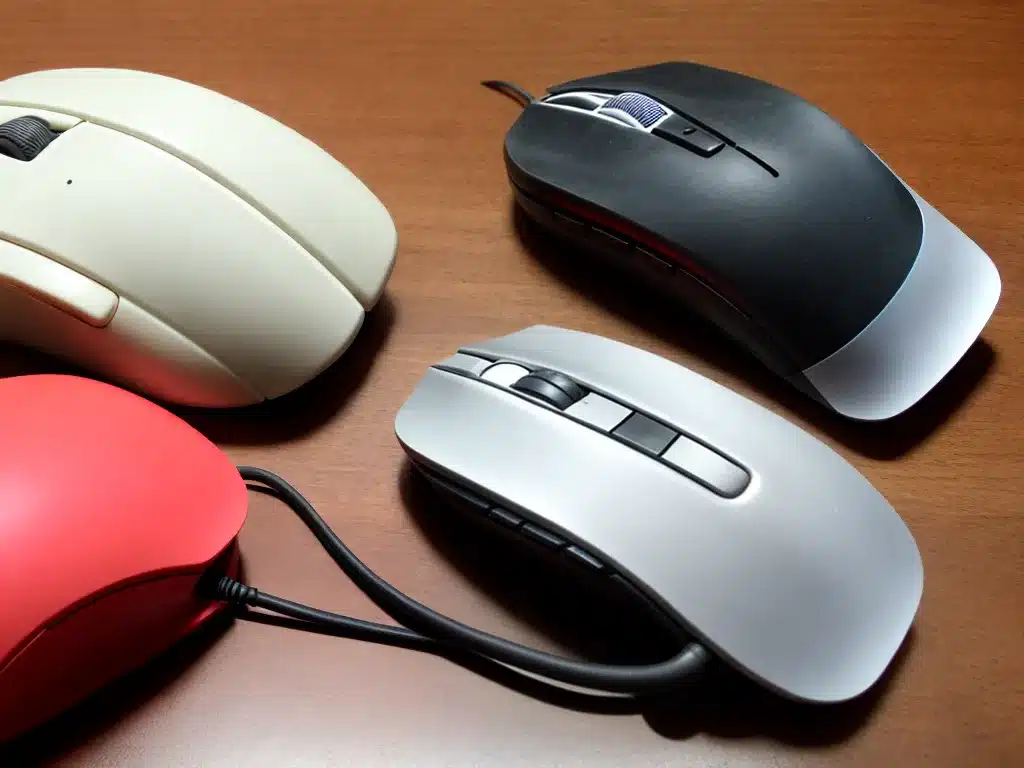
Having an unresponsive wireless mouse or keyboard can be frustrating. However, there are several things you can try to get your devices working again. Here is a step-by-step guide on how to fix an unresponsive wireless mouse or keyboard:
Check the batteries
The first thing to check is whether your wireless mouse or keyboard needs new batteries. Remove the old batteries and replace them with new ones. Make sure the batteries are inserted correctly by matching the +/- symbols.
Bad or incorrectly inserted batteries are the most common reason for wireless devices becoming unresponsive. New batteries often resolve the issue.
Try resetting the wireless devices
If new batteries do not fix the problem, try resetting the wireless mouse or keyboard. Most wireless devices have a small reset button located on the bottom or back. Press and hold this reset button for 5-10 seconds until the device’s lights start flashing.
Resetting disconnects and then reconnects the wireless connection between the device and computer or receiver. This often resolves connection issues that can cause the mouse or keyboard to stop responding.
Check the wireless receiver
Make sure the wireless receiver is plugged in correctly if you’re using a wireless mouse or keyboard that came with a receiver. Try unplugging the receiver from the computer and plugging it into another USB port.
Also check that the receiver is not damaged or obstructed. Make sure the receiver is positioned in clear line of sight of the wireless devices. Move it closer to the mouse or keyboard if the signal seems weak.
Replace the batteries in the wireless receiver
Some wireless keyboards and mice come with a receiver that also requires batteries. Pop open the receiver compartment and install fresh batteries. This can restore the wireless signal if the batteries in the receiver are low.
Update or reinstall device drivers
Outdated, corrupt, or missing drivers can cause connection issues with wireless mice and keyboards.
Update your mouse and keyboard drivers to the latest available versions. This may restore full functionality. You can find and install driver updates through your computer manufacturer’s website.
If updating does not work, uninstall the device drivers completely, restart your computer, and install the latest drivers. This reinstall process often resolves driver-related issues.
Try pairing the devices again
Go through the pairing process again to reconnect your wireless mouse or keyboard with the receiver or computer. Refer to the instruction manual if you need guidance on how to initiate pairing mode.
Successful pairing resets and re-establishes the wireless connection. Try this if your devices are having intermittent connectivity problems.
Check for interference
Make sure your wireless devices are not located near other electronics that could be causing signal interference. Devices like WiFi routers, microwaves, cordless phones, and Bluetooth gadgets can disrupt the wireless signal.
Move the mouse/keyboard receiver and device away from potential sources of interference. This improves signal strength and range, reducing the chance of spotty or lost connections.
Test with another computer
As a last resort, try connecting your wireless devices to another computer. If the mouse or keyboard works on a different PC, then you know the issue lies with the original computer’s settings or hardware.
However, if the devices remain unresponsive, then you likely have a hardware problem with the mouse, keyboard, or receiver, in which case replacement may be necessary.
When to Replace a Faulty Device
If you have tried all of these troubleshooting tips and your wireless device still does not work properly, it may be time to replace it.
Consider buying a new wireless mouse or keyboard in the following situations:
- The device is very old, damaged, or well-worn. Older devices lose wireless strength.
- You have done extensive troubleshooting with no success.
- The device works intermittently or has deteriorating performance.
- The wireless receiver or mouse/keyboard have obvious physical damage or broken parts.
Getting a brand new wireless mouse or keyboard will restore smooth, responsive, and reliable functionality. Make sure to keep your new devices away from liquid spills and drops that can damage the electronics.












